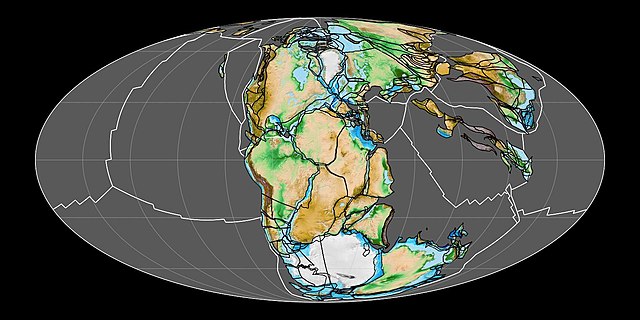
According to recent research conducted by Australia’s Curtin University, the world’s next supercontinent will form when the Pacific Ocean closes in two hundred to three hundred million years.
Earth’s crust, also known as the lithosphere, is made up of continents and oceanic rock. The lithosphere sits on top of the mantle, which is a thick layer of molten rock that extends for thousands of kilometers.
The continents of Earth travel over the mantle relatively slowly. One of the faster moving plates is advancing toward the north at a rate of about seven centimeters per year.
The Himalayas were created when the Indian subcontinent collided with Asia some forty to fifty million years ago. On occasion, continents bump into one another, causing mountain ranges to rise. In certain cases, they all come together to form a single large supercontinent.
Genesis of Supercontinents Using Supercomputers
Geologists at Curtin University in Perth were able to model the genesis of supercontinents using supercomputers. Their findings demonstrate that the thickness and strength of the plates under the oceans have decreased as a result of the Earth cooling over billions of years.
The Atlantic and Indian Oceans, considered to be “younger” waters than the Pacific, are therefore more resistant to continental drift. The results have been reported in the National Science Review.
Dr. Chuan Huang from the School of Earth and Planetary Sciences at Curtin University and the Earth Dynamics Research Group said, “Over the past two billion years, Earth’s continents have collided to form a supercontinent every 600 million years, known as the supercontinent cycle. This means that the current continents are due to come together again in a couple of hundred million years’ time.”
The “supercontinent cycle,” according to co-author Professor Zheng-Xiang Li of Curtin’s School of Earth and Planetary Sciences, remains a mystery.
Li says, “It’s a very intriguing question. We don’t really know. Until thirty years ago, we knew of one supercontinent Pangaea between 200 and 300 million years ago. But, with work over the last thirty years, we realized before Pangea there were two more supercontinents. And they happened in a kind of regular interval every 600 million years. That’s the observation based on the geological record.”
Li hypothesizes that this cycle might be linked to the Earth’s mantle experiencing a rising and falling of hotter and colder molten rock in a manner similar to convection.
Huang says, “The resulting new supercontinent has already been named Amasia because some believe that the Pacific Ocean will close (as opposed to the Atlantic and Indian oceans) when America collides with Asia. Australia is also expected to play a role in this important Earth event, first colliding with Asia and then connecting America and Asia once the Pacific Ocean closes.”
According to Li, the way we comprehend plate tectonics has also changed.
“Twenty-five years ago” Li said, “most people thought the continents were dragged by the mantle, the floating rock underneath the shell of the Earth’s crust. But now, we know it’s a combination of forces. You have the mantle dragging continents, and the oceanic slabs going into the mantle which acts like a heavy sinker also dragging the continents into the mantle.”
Huang explains, “By simulating how the Earth’s tectonic plates are expected to evolve using a supercomputer, we were able to show that in less than 300 million years’ time it is likely to be the Pacific Ocean that will close, allowing for the formation of Amasia, debunking some previous scientific theories.”
Li tells Cosmos, “We tried to mimic the Earth’s processes, the plate tectonic process, using the supercomputer. We filled in basic parameters like temperature gradient and the density profile. This is seen through the continental lithosphere and the oceanic lithosphere. We look at their density, strength, and viscosity.”
He adds, “Out of these parameters, we tried to physically mimic as best as we can Earth’s conditions. We see how continents come together or break up in the plate tectonic process with the supercomputer. We model a 3D image for the spherical processes as they evolve through time.”
Li emphasizes how fascinating the research is. “Earth as we know it,” he says, “will be drastically different when Amasia forms. The sea level is expected to be lower, and the vast interior of the supercontinent will be very arid with high daily temperature ranges.”
He adds, “We are fortunate to live in a very exciting time in geological research. There was the ‘Plate Tectonics Revolution’ 60 years ago. I believe we are now in another revolution. We are able to link what we see on the surface, the plate motion, with what is happening in the deep Earth or even in the core. In fact, the whole Earth system is either a kind of interactive system, from the core to the mantle to the crust, and then to the atmosphere and even life, the biosphere. We are starting to see the Earth system in a more holistic kind of way.”
See all the latest news from Greece and the world at Greekreporter.com. Contact our newsroom to report an update or send your story, photos and videos. Follow GR on Google News and subscribe here to our daily email!



